Secrets Of Quipu – One Of The Most Mysterious Phenomena That Existed In Odd Number Of Dimensions
A. Sutherland - AncientPages.com - The Incan Empire, which stretched for over 2000 miles from the north to the south and had an estimated 10 million population - was the largest in pre-Columbian America.
An example of a quipu from the Inca Empire, currently in the Larco Museum Collection. Image credit: Claus Ableiter - CC BY-SA 3.0
To run the empire, the Inca had a sophisticated and organized government. Yet they had no written language but a curious invention, a form of non-verbal communication written in an encoded language similar to the binary code used by modern computers.
A quipu (or 'khipu' - (in Quechua' knot') was a series of strings with knots. The number of knots, the size of the knots, and the distance between knots conveyed meaning.
Each sovereign Inca formed an ayllu or "gens" of his descendants to preserve the memory of his deeds in quipus, traditions, and songs learned by heart. It is fascinating to see what details may be recorded on these cords, for which there are masters like our writing masters.
Quipu in the Museo Machu Picchu, Casa Concha, Cusco. Pi3.124 - CC BY-SA 4.0.
Gary Urton, professor of anthropology at Harvard University, has re-analyzed the complicated knotted and decorative strings of the Inca - decorative objects called 'quipu,' which is not only a way of binding strings but also their length, twisting the cord, and finally the color and type of yarn (to perform kipu Incas used the llama or alpaca hair.)
The system - good and very accurate - was traditionally handed down from fathers to sons, with all recorded past events, repeating the story of them many times, over and over again, until they were all finally memorized for future generations.
Quipus were complex assemblies of knotted ropes used in South America as a data storage device and played an essential role in the Inca administration. Only a few specialists could use and decipher them. Their meaning remains a mystery, but color, the relative position of knots, knot types, and rope length were used to encode categorical and quantitative variables.
The oldest known Quipu is 4600 years old.
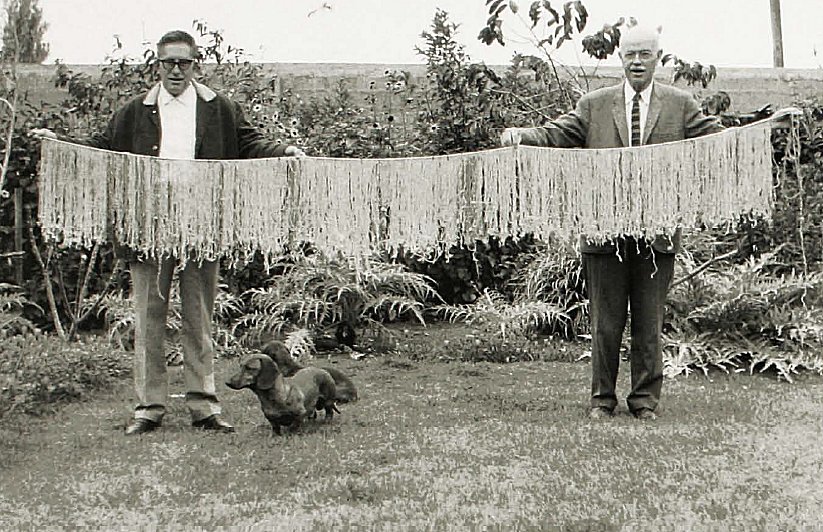 The longest known quipu. Photo credit: P. Dauelsberg
The longest known quipu. Photo credit: P. Dauelsberg
Unfortunately, in the late 16th century, quipus were still being used by Peruvians until the Roman Catholic Church decreed they were "the devil's work" and had most of them destroyed.
Urton discovered they contained a seven-bit binary code capable of conveying more than 1,500 separate information units.
Already, in the 1920s, historians demonstrated that the knots on the strings of some quipu were arranged in such a way that they were a store of calculations, a textile version of an abacus.
"The Incas had never acquired the art of writing, but they had developed an elaborate system of knotted cords called quipus. These were made of the wool of the alpaca or the llama, dyed in various colors, the significance of which was known to the magistrates.
The cords were knotted in such a way to represent the decimal system and were fastened at close intervals along the principal strand of the quipus. Thus, an important message relating to the progress of crops, the amount of taxes collected, or the advance of an enemy could be speedily sent by the trained runners along the post roads..." (Hiram Bingham, the American explorer who found the ruins of Machu Picchu in 1911, wrote in 'Lost City of the Incas.')
Unfortunately, only a few 'quipu' arrangements survived to the present time. The truth is that most of the copies were burned. When the Spaniards conquered the Inca State, the Catholic Church ruled that 'quipu' are the work of Satan and, as such, must, therefore, be destroyed, and so the Spanish conquistadors did in the 16th century.
Approximately 200 of them, dating no earlier than about 650 AD, have been found and still can be analyzed.
Today, the Quipu is considered the world's first three-dimensional language, and deciphering the Inca's encoded writings can be compared to decrypting ancient Egyptian hieroglyphs.
In 2005, the American magazine "Science" published a sensational discovery that the 'quipu' system was not only memorizing numbers but probably non-numeric data - geographical names, names, and more.
With the 'quipu' system, the Inca could also perform complicated calculations, which sufficed to organize the whole empire's economy. However, some believe it was more than a mere calculating device.
In 1996, a manuscript called Historia et Rudimenta Linguae Piruanorum came to light in Italy among the family possessions of a Naples historian.
This fascinating document - supposedly written in the early 17th century by Jesuits - contains a fragment of 'quipu' and explains how Quipu was used to encode spoken language. According to the manuscript, "ideograms" or symbols with well-known meanings from Incan art were used as either phonograms (to represent sounds) or logograms (to denote words).
In 'The Ancient Civilizations of Peru,' J. Alden Mason (among other researchers) suggests another purpose of 'quipu,' namely - a historical record of the whole empire.
The following example demonstrates three segments from a level II cord (UR068) and a segment from a level III cord (UR067), laid out such that the summation of level II numbers match the values in the same relative positions on the level III cord.
Some Chinese chronicles mention certain emperors' wish to replace the ideographic script with one based on knots.
It indicates the existence of links between pre-Columbian America and Asia.
According to Baron Nordenskiold, an expert from Sweden, 'writing need not be the only way expressing thought.' Nordenskiold believed that 'quipu' might represent prophecies and horoscopes as well as mathematical calculations.
Modern mathematicians consider the Inca knots as one of the most mysterious phenomena that can occur in a vast number of dimensions!
Some of the simplest kinds of knots have been already deciphered. It has yet to be found a universal method to decipher all the sacred 'quipu' records of the Inca.
Many discoveries are yet to be made, and time will tell what secrets quipus hold. The use of the "quipu" for accounting purposes has been predominantly attributed to the Inca culture of Peru; however, documented evidence shows that early Hawaiians and ancient Chinese used it much earlier.
Written by A. Sutherland - AncientPages.com Staff Writer
Updated on Nov 1, 2023
Copyright © AncientPages.com. All rights reserved. This material may not be published, broadcast, rewritten or redistributed in whole or part without the express written permission of AncientPages.com
Expand for referencesReferences:
Sze Arthur, Quipu
Urton, Gary. Inka history in knots
The New York Times, Untangling an Accounting Tool and an Ancient Incan Mystery
More From Ancient Pages
-
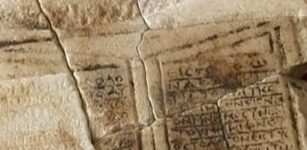 Last Fragment Of Early Christian Christogram Found In Ancient City Of Parthicopolis, Bulgaria
Artifacts | Sep 9, 2015
Last Fragment Of Early Christian Christogram Found In Ancient City Of Parthicopolis, Bulgaria
Artifacts | Sep 9, 2015 -
 Evidence Ravens Share A 30,000-Year-Old Relationship With Humans
Archaeology | Jul 14, 2023
Evidence Ravens Share A 30,000-Year-Old Relationship With Humans
Archaeology | Jul 14, 2023 -
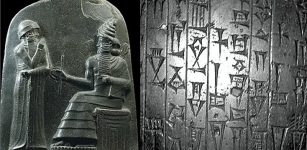 Hammurabi: The Great King Of Babylon And His Laws
Civilizations | Oct 21, 2016
Hammurabi: The Great King Of Babylon And His Laws
Civilizations | Oct 21, 2016 -
 Are Relics In Santi Apostoli Church Really The Remains Of St. James And St. Philip?
Fossils | Feb 8, 2021
Are Relics In Santi Apostoli Church Really The Remains Of St. James And St. Philip?
Fossils | Feb 8, 2021 -
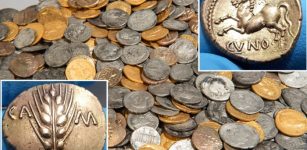 Unique Hoard Of Roman-British Coins Found Near Utrecht, The Netherlands
Archaeology | Jan 27, 2025
Unique Hoard Of Roman-British Coins Found Near Utrecht, The Netherlands
Archaeology | Jan 27, 2025 -
 Norse Religion Was Different Than Previously Thought – New Study Reveals
Archaeology | Feb 27, 2021
Norse Religion Was Different Than Previously Thought – New Study Reveals
Archaeology | Feb 27, 2021 -
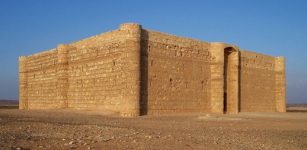 Strange Desert Castle Qasr Kharana In Jordan
Featured Stories | Oct 1, 2019
Strange Desert Castle Qasr Kharana In Jordan
Featured Stories | Oct 1, 2019 -
 What Were The Most Important Inca Laws That All Citizens Had To Respect?
Ancient History Facts | Aug 16, 2017
What Were The Most Important Inca Laws That All Citizens Had To Respect?
Ancient History Facts | Aug 16, 2017 -
 Mystery Of Hizir – One Of The Most Enigmatic And Extraordinary Ancient People
Ancient Mysteries | Oct 16, 2018
Mystery Of Hizir – One Of The Most Enigmatic And Extraordinary Ancient People
Ancient Mysteries | Oct 16, 2018 -
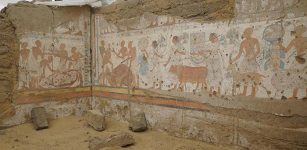 Tomb Of Pharaoh Ramesses II Treasurer Ptah-M-Wia Discovered In Saqqara
Archaeology | Nov 4, 2021
Tomb Of Pharaoh Ramesses II Treasurer Ptah-M-Wia Discovered In Saqqara
Archaeology | Nov 4, 2021 -
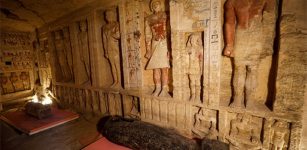 Collection Of 59 Well-Preserved 26th Dynasty Coffins Unearthed In Saqqara Necropolis, Egypt
Archaeology | Oct 4, 2020
Collection Of 59 Well-Preserved 26th Dynasty Coffins Unearthed In Saqqara Necropolis, Egypt
Archaeology | Oct 4, 2020 -
 First Known Depiction Of The Biblical Heroines Deborah And Jael Unearthed On 1,600-Year-Old Mosaics
Archaeology | Jul 6, 2022
First Known Depiction Of The Biblical Heroines Deborah And Jael Unearthed On 1,600-Year-Old Mosaics
Archaeology | Jul 6, 2022 -
 Barrels With Unique Intact Cargo Found On The Osmundvraket (Osmond Wreck)
Archaeology | Jun 7, 2024
Barrels With Unique Intact Cargo Found On The Osmundvraket (Osmond Wreck)
Archaeology | Jun 7, 2024 -
 Mystery Of Ancient Beehive Tombs Around The World
Featured Stories | Feb 28, 2016
Mystery Of Ancient Beehive Tombs Around The World
Featured Stories | Feb 28, 2016 -
 Ancient DNA Illuminates Unknown ‘Ghost’ Populations In Sub-Saharan Africa
Archaeology | Jan 22, 2020
Ancient DNA Illuminates Unknown ‘Ghost’ Populations In Sub-Saharan Africa
Archaeology | Jan 22, 2020 -
 Ancient City Machu Picchu Was Originally Called Huayna Picchu By The Incas – Study Of The Name Reveals
Archaeology | Mar 23, 2022
Ancient City Machu Picchu Was Originally Called Huayna Picchu By The Incas – Study Of The Name Reveals
Archaeology | Mar 23, 2022 -
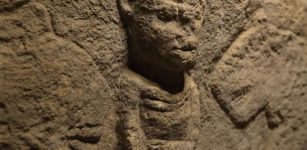 World’s Oldest Narrative Art Depicts An ‘Unusual And Unique’ Scene – 11,000-Year-Old Carving Investigated
Archaeology | Dec 8, 2022
World’s Oldest Narrative Art Depicts An ‘Unusual And Unique’ Scene – 11,000-Year-Old Carving Investigated
Archaeology | Dec 8, 2022 -
 Irkalla – Underworld With No Return Ruled By Ereshkigal, Granddaughter Of Enlil And Sister Of Inanna
Featured Stories | Oct 20, 2021
Irkalla – Underworld With No Return Ruled By Ereshkigal, Granddaughter Of Enlil And Sister Of Inanna
Featured Stories | Oct 20, 2021 -
 Hayk – Legendary Patriarch And Founder Of Armenia Who Defeated King Bel Of Babylon
Featured Stories | Feb 10, 2022
Hayk – Legendary Patriarch And Founder Of Armenia Who Defeated King Bel Of Babylon
Featured Stories | Feb 10, 2022 -
 Native Americans Helped Shape The Klamath’s Forests For A Millennia Before European Colonization
Archaeology | Mar 21, 2022
Native Americans Helped Shape The Klamath’s Forests For A Millennia Before European Colonization
Archaeology | Mar 21, 2022



